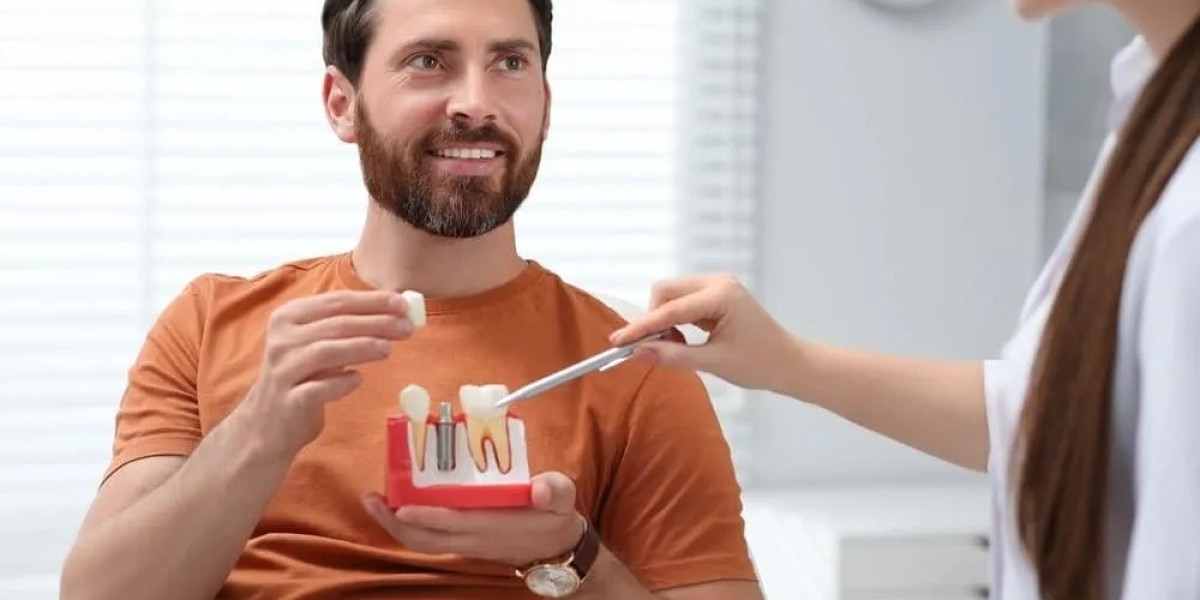Loose teeth can be a concerning sign, particularly when caused by periodontal (gum) disease. This condition, resulting from bacterial infection and inflammation, can gradually damage the supporting bone structure, leaving teeth unstable and at risk of loss. Many assume that once a tooth becomes loose, it cannot be saved — but early intervention can often prevent further damage. Modern dentistry offers a range of solutions, from specialised gum therapies and orthodontic support to restorative options like dental implants, helping to stabilise teeth and restore a strong, healthy, and confident smile for years to come.
Understanding Periodontal Disease
Periodontal disease is a progressive infection that affects the gums and the bone supporting your teeth. It usually begins as gingivitis — mild gum inflammation that causes redness and bleeding — and can advance to periodontitis if left untreated. In this severe stage, the inner layer of the gum pulls away from the teeth, forming pockets that collect plaque and bacteria.
Over time, this bacterial activity breaks down the bone and connective tissue that hold teeth in place. The result? Receding gums, persistent bad breath, and eventually, loose or shifting teeth.
Common symptoms include:
- Swollen or bleeding gums
- Persistent bad breath (halitosis)
- Gum recession, exposing tooth roots
- Pain while chewing
- Teeth that feel loose or move when touched
Early diagnosis is essential. Dentists and orthodontists use digital X-rays, periodontal measurements, and gum assessments to identify the extent of infection and bone loss.
Why Do Teeth Become Loose?
Loose teeth are primarily the result of bone deterioration around the roots caused by advanced gum disease. When harmful bacteria in plaque are not removed through regular brushing and professional cleaning, they harden into tartar, which irritates and inflames the gums. As the infection progresses, the bone tissue begins to deteriorate.
Here’s how it happens:
- Bacterial build-up: Plaque accumulates below the gum line.
- Inflammation: Gums become swollen and start to detach from the teeth.
- Bone loss: The bone supporting the tooth root gradually breaks down.
- Mobility: As support weakens, the tooth begins to move or shift.
It’s important to understand that not all tooth mobility results from gum disease. Sometimes, excessive force from misaligned teeth or grinding (bruxism) can loosen teeth — an issue that can be corrected by a Wimbledon orthodontist through alignment or bite adjustment.
Can Loose Teeth Be Saved?
In many cases, yes — loose teeth can be saved, especially when periodontal disease is caught early. The key lies in professional dental intervention combined with excellent oral hygiene.
Here are some effective treatments for saving loose teeth:
- Scaling and Root Planing (Deep Cleaning): This non-surgical treatment removes plaque and tartar from below the gum line, allowing gums to heal and reattach to teeth.
- Antibiotic Therapy: Medications or local antibiotic gels can help eliminate persistent bacterial infections.
- Splinting: Teeth that are slightly mobile can be stabilised by bonding them together using dental splints, reducing movement while healing occurs.
- Orthodontic Treatment: Misaligned teeth can place uneven pressure on gums and bone. An experienced orthodontist can help redistribute bite forces and prevent further loosening.
- Gum and Bone Regeneration: In more advanced cases, surgical procedures such as flap surgery, bone grafts, or guided tissue regeneration can restore lost support structures.
Saving a loose tooth requires consistent aftercare, including good oral hygiene and regular professional cleanings. The earlier treatment begins, the higher the chances of preserving your natural teeth.
When Teeth Cannot Be Saved
Unfortunately, not all teeth affected by severe periodontal disease can be salvaged. If the infection has destroyed too much of the surrounding bone or the tooth’s roots are severely compromised, extraction might be the only viable option.
While it can feel discouraging, removing an unsalvageable tooth prevents infection from spreading and allows for healthier, long-term restoration options. After extraction, the focus shifts to preserving the remaining bone structure and replacing the lost tooth effectively.
This is where dental implants Wimbledon become a game-changer — providing stability, functionality, and aesthetic appeal that mimic natural teeth perfectly.
Replacing Lost Teeth with Dental Implants
Dental implants are the gold standard for replacing missing or unsalvageable teeth. They consist of a titanium post that is surgically placed into the jawbone, acting as an artificial root. A crown is then attached to the post, offering a natural and durable replacement that looks and functions like a real tooth.
Why dental implants are the ideal solution:
- Permanent and Stable: Unlike dentures, implants are fixed and do not shift while eating or speaking.
- Preserve Bone Health: Implants stimulate the jawbone, preventing bone resorption and maintaining facial structure.
- Natural Appearance: The crown is custom-designed to match surrounding teeth perfectly.
- Long-Term Investment: With proper care, implants can last decades or even a lifetime.
For patients who have lost multiple teeth, implant-supported bridges or dentures provide a stable, full-mouth solution.
Collaborating with an orthodontist ensures that implants are positioned correctly within the bite alignment, enhancing both comfort and aesthetics. Together, orthodontic and implant treatments restore not just your smile but also your oral health and confidence.
Preventing Loose Teeth in the Future
Prevention is always better than cure when it comes to periodontal disease. Simple daily habits, combined with regular professional care, can make a significant difference in maintaining healthy gums and teeth.
Essential tips to prevent gum disease and loose teeth:
- Brush twice daily: Use fluoride toothpaste and soft-bristled brushes to clean along the gum line.
- Floss regularly: Remove plaque and debris between teeth where brushes can’t reach.
- Use antibacterial mouthwash: Helps reduce bacterial growth.
- Visit your dentist regularly: Routine check-ups allow early detection and treatment of gum issues.
- Stop smoking: Tobacco use greatly increases the risk of gum disease.
- Manage health conditions: Control diabetes and maintain good nutrition to support gum health.
Additionally, maintaining proper tooth alignment is crucial. Misaligned teeth can trap bacteria and make cleaning difficult, contributing to gum problems. Regular visits to an orthodontist can help identify and correct these alignment issues before they lead to more serious complications.
Conclusion
Loose teeth caused by periodontal disease don’t always mean the end of your natural smile. With prompt professional care, early-stage cases can often be reversed or stabilised. If a tooth cannot be saved, advanced restorative solutions like dental implants provide a secure, natural-looking replacement, restoring function and confidence. From preventive gum care to orthodontic alignment and implant restoration, modern dentistry offers effective solutions at every stage.
The Dental Lounges – Wimbledon is dedicated to helping patients achieve healthy, stable smiles through advanced gum care, implant dentistry, and orthodontic expertise. Your journey to stronger, healthier teeth starts with the right guidance and care.







